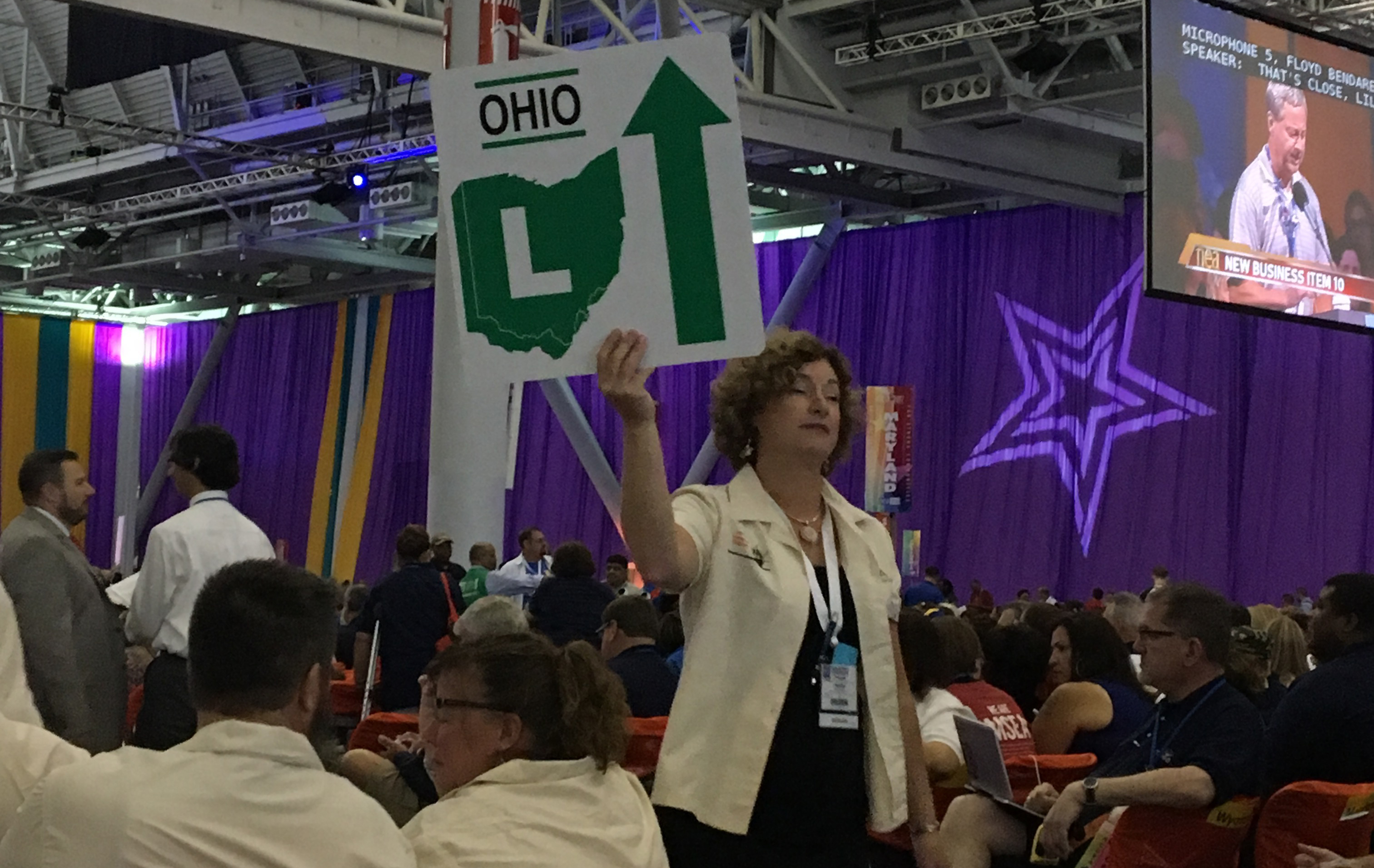July 2022 Ohio Schools
- COVER STORY: Award-winning art for 24th Annual Create a Cover Contest highlights what Ohio’s students love most about their schools
- SUBJECT MATTER
- OEA marks 175 years as the Voice for Public School Educators and Students
- FEATURE
- Direct Conversation
- Retirement System Update
- Political Action
Moved recently? Contact the OEA Member Hotline to update the address on file at 1-844-OEA-Info (1-844-632-4636) or email, membership@ohea.org. Representatives are available Monday-Friday, from 8:30 a.m. to 6 p.m. | OhioSchools — Past Issues

 Oh Yes, We’re Social — Join the Conversation!
Oh Yes, We’re Social — Join the Conversation!
April – May 2022 Ohio Schools
- COVER STORY: Prioritizing Student Health – When COVID-19 threatened those under his care, district school nurse David Pryer made sure Allen East students, teachers, and staff could return to school safely
- MAKING THE GRADE
- Oberlin’s Kurt Russell Named Finalist for 2022 National Teacher of the Year
- Association
- OEA to Hold In-Person 2022 Spring Representative Assembly with Virtual Component on May 7
- Candidates of OEA Statewide Election
- Proposed Amendments to the OEA Amended and Restated Constitution and Bylaws Spring 2022
Moved recently? Contact the OEA Member Hotline to update the address on file at 1-844-OEA-Info (1-844-632-4636) or email, membership@ohea.org. Representatives are available Monday-Friday, from 8:30 a.m. to 6 p.m. | OhioSchools — Past Issues

 Oh Yes, We’re Social — Join the Conversation!
Oh Yes, We’re Social — Join the Conversation!
Categories
Communications and Community EngagementEducation Policy and Governing Bodies
Education Support Professional
Higher Education Faculty
Higher Education Staff
Leadership Tools and Documents
Legal Issues
Legislative Issues and Political Action
Membership
New Teacher
OEA Member
Ohio Schools Magazine
Professional Development
Representative Assembly
Retired Member
Student Member
Teaching
Union Business
President’s Message: Support, Protection, Power
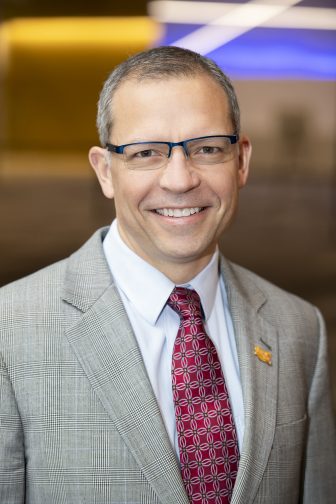
Our Union Helps Us Make Our Students’ Lives Better And Our Communities Stronger
I can’t begin to tell you how much of an honor it is to have the opportunity to serve as your president.
OEA is an incredible organization for two fundamental reasons: who we are, and why we’re here. We have caring, committed, qualified educators in all 88 of Ohio’s counties performing in a wide variety of roles who are united in a single cause—to ensure that every single one of our students is provided a quality public education that inspires their natural curiosity, imagination and desire to learn.
Driven by the desire to foster the critical thinking, problem-solving and decision-making skills my students needed to become effective citizens in our democracy, I became a high school social studies teacher 28 years ago. I didn’t go into education to help kids pass tests, but to create lifelong learners.
I wanted to make a difference, and I know you do too. That’s our purpose. That’s our mission.
That’s why I believe in you and your power to change lives and shape the future. My desire to make a difference naturally led to my active involvement in my local union.
I knew even before my first day of teaching American history at Tolles Technical Center in Plain City I would need the support of my colleagues if I had any hope of success.
That’s why I proudly joined the 45-member strong Tolles Education Association and soon found myself attending Labor- Management Committee meetings and advocating at the bargaining table.
As I continued my career in Worthington and through nearly three decades of activism at all levels of this organization, I have learned that it is only through our union that members are given the support and relationships to necessary to nurture our work with students. It is only through our union that we have the protection and advocacy needed to do our jobs without having to look over our shoulders. And it is only through our union that we are able to harness our collective influence and power to protect public education and improve the lives of our fellow educators and the students we serve.
“I wanted to make a difference, and I know you do too. That’s our purpose. That’s our mission.”
Many colleagues have supported and encouraged me throughout my union journey.
Wendy Nichols, my teaching mentor at Tolles, first invited me to belong to the association and provided me with opportunities to get involved in my local. Kathy Broom, who had been fired early in her marriage and teaching career simply for being pregnant and used the power of her union to successfully win her job back, helped me understand the power of collective advocacy. Suzanne Kaszar, my first OEA Labor Relations Consultant, taught me about bargaining and connected
me to programs to develop my leadership skills.
So many others have made a difference for me because they recognized my leadership potential and provided opportunities for me to play an active role in servingmy fellow members. It began with a simple invitation to belong to a movement that was larger than myself.
If you’re new to your role as an educator or education support professional, or if you have been in the profession for a while but have not yet become a member, I invite you to belong to the OEA and to tap into the support, protection and power your union has to offer.
If you’re returning as a member, I encourage you to be actively involved. Consider following the example Wendy provided to me and invite at least one colleague to join you and feel included. We’re all in this together.
I’m inspired by you and all that you do every day to make our students’ lives better and our communities stronger. You have challenged, nurtured and supported me throughout my union journey, and I look forward to continuing our journey together.
Sincerely,
![]()
Scott W. DiMauro, President
Ohio Education Association
Ohio Education Association Elects New President And Vice President
[Columbus, May 13, 2019] ─ Members of the Ohio Education Association (OEA), the state’s largest public employee union, have elected Scott DiMauro to a three-year term as President, and Jeff Wensing to a three-year term as Vice President. Both will take office on July 15, 2019. The current President, Becky Higgins, is term-limited after having served two three-year terms.
The election of the two officers took place over the weekend at the OEA’s Representative Assembly (RA), the governing body of the organization. Nearly 1,000 member delegates from OEA local affiliates throughout Ohio participated in the RA.
DiMauro, who currently serves as OEA’s Vice President, has been an active OEA member throughout his teaching career. He was a social studies teacher at Worthington Kilbourne High School before being elected as OEA’s Vice President in 2013.
OEA Vice President-elect Jeff Wensing is a 26-year high school math teacher from Parma, Ohio. Prior to his election as OEA Vice-President, Wensing served as the President of the Parma Education Association and as the President of the North Eastern Ohio Education Association.
OEA represents 122,000 teachers, education support professionals and higher-education faculty.
###
Blog: The Antidote to Despair
By Julie Rine is an English Instructor and an Academic Challenge Advisor at Minerva High School, Minerva, Ohio.
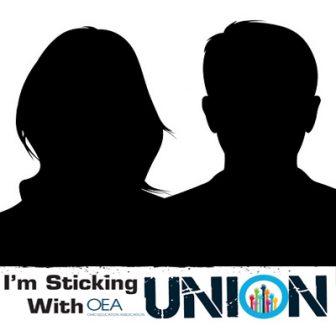 It’s easy to feel hopeless and overwhelmed right now, isn’t it? The Supreme Court’s decision regarding the Janus case, while not unexpected, still stung. The move by the Court has the potential to weaken unions, many sources say, and the decision has even been referred to as a “crippling blow” .
It’s easy to feel hopeless and overwhelmed right now, isn’t it? The Supreme Court’s decision regarding the Janus case, while not unexpected, still stung. The move by the Court has the potential to weaken unions, many sources say, and the decision has even been referred to as a “crippling blow” .
There are certain unfortunate situations in life that we can’t control, and it’s important to recognize those and let them go rather than devote energy to a state of affairs that cannot be changed.
There are also situations in life that we CAN impact, with our actions, our words, our advocacy, but even in those situations, there are moments when you have to let go, politically, personally, emotionally. You have to take a break, look away, check out, turn off the news and turn on a Friends rerun, lose yourself in a good book, take a few deep breaths and decide to let go and let someone else take up the cause for awhile. Those “let go” moments are critical to maintaining good mental health and restoring energy to jump back into the fray when we are refreshed and ready to go.
But this is not one of those times. This is not a “let go” moment. This is a “Let’s Go” moment.
The media would have you believe that the Janus ruling will lead to fewer union members which means a reduction in funds which equals unions cutting jobs and services and benefits. If you believe the news, soon our teacher unions will be so weak and ineffective that teachers will not be able to influence an impressionable kindergartner, let alone legislative policies.
Don’t believe the hype.
If anyone is equipped to turn a bad roll of the dice into an opportunity to change the game, it’s teachers.
On a daily and weekly basis, we think on our feet, we adapt to a snag in the routine. We reflect on what worked and what didn’t and make adjustments in the three minutes between classes, a task that would take Congress three months. We take on whatever challenges exist in our communities and in our classrooms and we overcome them. We don’t stop there, either. Most of the time, we not only overcome the challenges we face, challenges which can change from year to year and week to week, (sometimes even minute to minute!), we create new programs, new methods, and new realities that are often more effective for our students than what existed before the obstacle presented itself.
I don’t care what your political leanings are, if you are a teacher, you rival only parents in your fierce desire to protect kids and prepare them to succeed in the future.
The union helps us do just that. Through the union, we can fight for what our kids need to succeed, such as smaller class sizes, adequate and up-to-date academic resources, onsite counselors and mental health professionals, and a safe environment in which to learn. The union also helps us fight for what teachers need to help students succeed, such as adequate planning time, meaningful professional development, continued opportunities for further education and training, sufficient time to work as teams to tackle problems rather than as isolated instructors behind our classroom doors, and yes, a fair salary which allows us to focus fully on our students and our own families instead of squeezing in hours away from both while we work a second job to make ends meet. The trickle-down effect here is obvious; when teachers lack support and resources, kids lose the effective education they deserve.
So what can we do?
The decision will not be reversed, and even worse, it appears that a new Justice will be seated who may have equally damaging views of unions and public education.
First, we must remember that Supreme Court Justices are not the only ones allowed to issue opinions. We can write letters to the editor of our local papers, and we can routinely call or write our elected officials to make our voices heard and our opinions known.
Secondly, we can actively recruit members, especially young teachers, to not only join the union, but to become active in the union. Retaining or gaining members will of course help the union financially, since our dues dollars provide us with the resources and training necessary to be effective advocates for our students. But we don’t just need the dues money. We need active and energetic members, more than ever before. Money talks, but members act.
Thirdly, we can help register new voters. If we want a future in which citizens are active participants in the democratic process (whether they are on “our side” or not), then we must emphasize the importance and value of our right to vote, and then take the practical step to register young voters. It is a simple process. There is no reason why every 18-year-old student who graduates from an American high school should not be registered to vote.
 We can’t force them to register, however, so the goal should be to get them excited to register.
We can’t force them to register, however, so the goal should be to get them excited to register.
By teaching our students how to read a variety of sources on any given topic and then to form their own opinion, we help them become critical thinkers. Critical thinkers are often eager to make their positions known, and the most powerful way to do that is to exercise the right to vote. Few moments of my teaching career have been as special to me as when I registered a student to vote and she literally high-fived me and yelled, “I can vote, I can vote!” This is the enthusiasm we must seek to engender in our classrooms.
Perhaps most importantly, we can get involved in local and OEA efforts to elect pro-public education and pro-union candidates. We can work phone banks, canvass door-to-door, talk to our colleagues and friends about why we support certain candidates. We must follow that up by voting for candidates who support us as public school teachers and as union members, up and down the ballot, in local elections, in primaries, in midterms and in presidential elections. These actions are particularly important in Ohio this year, as we will be voting for a senator and a governor.
Political defeats can be discouraging, but nothing feels worse than knowing you could have done more to ensure victory when instead you chose to sit on the sidelines. We must take our frustration and allow it to motivate us to take action.
Sure, the Supreme Court decision is a setback, a challenge to be overcome. But a “blow” to unions? I don’t think so. In fact, I think they might have just poked the beast. Joan Baez said “Action is the only antidote to despair.” So don’t despair. Don’t make this a “let go” moment. This is a “LET’S GO!” moment and I have no doubt that we will persevere and succeed. The teachers’ unions are strong because teachers are strong, and we are stronger when we stand together, as friends, as colleagues, and as proud union members.
![]()
— Julie Rine is an English Instructor and an Academic Challenge Advisor at Minerva High School, Minerva, Ohio.
OEA #RedForEd T-Shirts!

We’re calling on all Ohio educators and support professionals to wear red every Wednesday!
- Order a custom OEA #RedForED t-shirt today. Only $15.00
Join your peers around the nation to raise our collective voice on behalf of our students, our communities, and our profession! Take the National #RedForEd pledge!
Benjamin Local Classified Employees Win Union Election
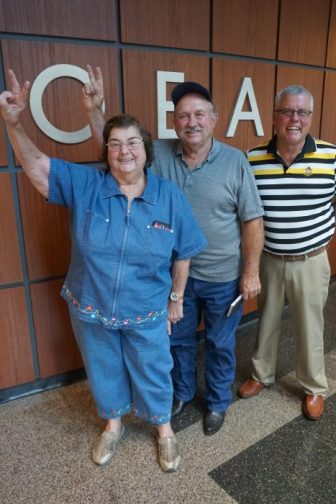
Joyce Fish loves her students. For 41 years, she has driven the students of the Benjamin Logan Local School District in her familiar yellow bus.
Located in eastern Logan county, near Bellefontaine, Ohio, the terrain can be challenging. “You learn to respect the weather, rugged hills, and steep valleys,” says Dan Fish; yes, Joyce’s husband and colleague.
However, after years of feeling they were not getting any love or respect from district administrators, in December 2017 they reached the Ohio Education Association.
Their efforts paid off — they’re no longer at-will employees and have a seat at the table. Results, tallied July 24, by the State Employment Labor Relations Board, show workers voted an overwhelming 73% in favor of OEA representation.
For the first time in more than 30 years, the district’s 70+ bus drivers, cafeteria workers, educational assistants, and paraprofessional aides will have will have union representation.
They will join the district’s 115+ educators of the Benjamin Logan EA, who have been a part of OEA since 1974.
Joyce and Dan say they’re looking forward to the collective-bargaining process. “Unanswered demands for respect as well as ‘fair and equal treatment for everyone,’ tell a story of professionals who are tired of being pushed around,” says Joyce.
![]()
 Oh Yes, We’re Social — Join the Conversation!
Oh Yes, We’re Social — Join the Conversation!
![]()
You Cannot Silence the Voice of Working People

Teaching children is pretty wonderful.
This has been my passion and in the 19 years that I taught, I learned from and have been inspired by my colleagues. I have also been moved by the actions of fellow union members who fought for better wages and safe working conditions.
The energy we are seeing with teachers standing up in the neighboring states of West Virginia and Kentucky and elsewhere as the #RedForEd movement spreads across the country is unparalleled in recent history. Public opinion is with us. A recent poll found that 62% of Americans believe the country is better off with stronger unions.
Yet, while this happening, amid the highest level of support for unions in 15 years, the US Supreme Court in a narrow 5-4, politically-motivated decision ruled that unions – specifically public employee unions — should be weaker. The Supreme Court ruled in the case of Janus v. AFSCME, Council 31 to further tilt the playing field in favor of the wealthy and corporate interests.
The court overturned 40 years of precedent in deciding that requiring so-called fair-share fees to be paid by people who choose not to join a public-sector union but who enjoy the benefits of union representation somehow violates the First Amendment of the Constitution. This doesn’t make sense, and it’s not right.
It also doesn’t make sense that so many people are finding it difficult to get by and provide for their families, no matter how hard they work. It doesn’t make sense that people are more productive than ever, but they’re working longer hours for less money and fewer benefits. And it doesn’t make sense that all this is going on while a handful of very wealthy people have seen their salaries and holdings skyrocket. It is shameful that the wealthy special interests behind the Janus case have succeeded in manipulating the highest court in the land to do their bidding.
"I believe deeply in the power of our collective voice to make sure that every teacher and student has the resources they need to be successful."
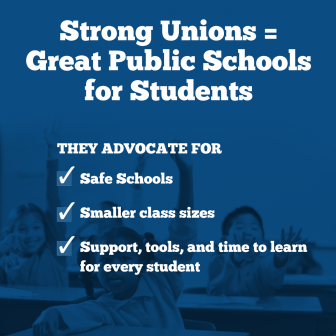
I believe deeply in the power of our collective voice to make sure that every teacher and student has the resources they need to be successful. When unions negotiate for working conditions in the classroom, they also negotiate for the conditions in which our children learn. When our unions advocate for us as educators, they also advocate for the students we serve.
Public service workers-teachers, social workers, firefighters, and nurses are more determined than ever to stick together in their unions. Unions remain the most effective vehicle for the power in numbers needed for working people to secure their rights and freedoms, and they provide a pathway to the middle class.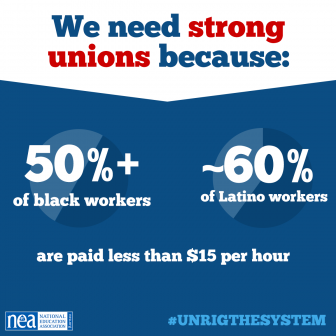
The truth is, when unions are strong, the entire community benefits. Unions use their collective voice to advocate for policies that help all working people — like increases to the minimum wage, affordable health care and great public schools.
Unions help close the pay gap for women and communities of color who have been systematically disadvantaged due to discrimination and prejudice.
African-American women in unions earn an average of $21.90 per hour, while non-union women earn $17.04. When Latinos are members of a union, their median weekly income increases by more than 38 percent.
The wealthy special interests that have benefited from an unfair, unbalanced playing field are now intent on tilting that playing field even more by attacking public-sector unions.
It’s driven by ideological extremists who oppose our basic right to organize. And it’s an attack on more than the men and women who are teachers and custodians and first responders; it’s an attack on anyone who wants to use their voice to fight for something better for their communities.
I have dedicated my life both to helping students and fighting for my community and I won’t back down.
My fellow educators and I are going to continue to speak out and I ask those who feel the same, please join us. Because no great social change — from ending slavery to securing the right to vote for every citizen, to winning the freedom to organize — has been achieved by standing alone.

Becky Higgins
President
Ohio Education Association
Categories
2018 Press ReleasesAbout Voices of Change
Education Support Professional
Higher Education Faculty
Higher Education Staff
Legislative Issues and Political Action
Local Leader
Member Stories
Membership
New Teacher
Non-educator
OEA Member
preK-12 Teacher
Retired Member
Student Member
What's New
Local Capacity
It takes all of us together to educate the child. And we all love what we do. We also know that whatever affects one is going to affect others, so we advocate and fight for our students and each other. That’s the benefit of belonging to a local association.
Perceptions and Procedures
Lessons from the 2017 NEA RA
Anyone who reads social media related to the OEA/NEA can see that the perception of some of our colleagues is that OEA/NEA isn’t doing enough about certain issues, or worse, isn’t listening to members’ opinions. If that is your perception, let me assure you as a first-time delegate to the NEA RA (Representative Assembly) held this summer in Boston, that our union leaders are listening.
The bulk of the time spent at the NEA RA consisted of presenting and debating New Business Items (NBIs), proposed amendments to current NEA Resolutions, new policies, etc. Anyone could submit an issue or amendment to be discussed on the floor. In our morning meetings with our fellow Ohio delegates, we listened to the recommendations of various OEA committees who had reviewed the upcoming issues and whose members gave us a brief explanation of why they recommended either supporting or opposing the item/amendment. There was frequently a debate, and then the Ohio Caucus voted on a position to take. However, it was made very clear that any delegate could vote however he/she chose. At the RA later that day, with delegates from all states present, and often after very robust debate, we voted. An Ohio communications team held up signs reminding us what our Ohio Caucus decided about the item, but we were not obligated to follow that decision. Sometimes other delegates proposed an amendment to the issue at hand, and the Ohio Communications team then showed signs with our Leadership Team’s recommendation regarding the change. Still, delegates could vote however they wished.
And they did.
If you ever want to see democracy in action, all you have to do is observe the floor of any OEA/NEA RA. If the verbal vote is too close to call, a standing vote occurs. In Boston, I saw friends, colleagues, and roommates next to each other…one standing, one sitting. We sat as a group but we voted as individuals, and it was powerful to see so many people united in respectfully making their opinions known.
The debates leading up to these votes were epic (if you don’t believe me, look up NEA RA memes on twitter!). Sometimes, a debate occurred over one word. For example, we debated whether or not the word “powerful” should be used in an NBI to describe the NEA, and whether or not the word “zealously” should be used to describe a particular action. More substantial issues were debated as well, such as when the NEA should endorse presidential candidates and the new NEA policy on charter schools. At this year’s RA, there were 159 NBIs, three Constitutional Amendments, 12 Standing Rule Amendments, eight Legislative Amendments, 16 Policy Statement Amendments, and 31 Resolution Amendments submitted. Each of these were discussed and debated.
It was my first time attending the NEA RA, which is basically like the OEA RA amped up. I had attended the OEA RA before, and so I thought I knew what to expect. That wasn’t always the case. Some issues that I felt would have short discussions actually spark some of the fiercest debates. In all of these cases, my eyes were opened to another perspective that I had not considered. And in all cases, the voices of the delegates were heard. Sometimes my vote fell on the victorious side and sometimes my vote was for the side that got defeated, but I have no doubt that the end results represented what the majority of the delegates wanted.
Being able to understand how someone else perceives an issue often complicates matters. Understanding someone else’s perception can make your own convictions less black and white. It can muddy your positions. But hearing the viewpoints of other OEA and NEA members is an opportunity for which we should be grateful. It is something we should value, and after attending both an OEA RA and the NEA RA as a delegate for the state of Ohio, I very much appreciate that our association goes to such lengths to hear every viewpoint before voting as a body. I have learned a lot about the process of how the NEA forms its core beliefs and the actions it takes in the name of those beliefs. Because I care very much about the perception of my colleagues in the OEA, I want to assure you that our various viewpoints are being heard at both the state and national levels.
It is no easy task to formulate policies and recommend actions that represent the members of the largest union in the country. The viewpoints of others must be taken into account and there must be a process for allowing that to happen. For me, being a part of the largest democratic deliberative assembly in the world was alternately exhausting and exhilarating, frustrating and gratifying, mind-numbingly boring and absolutely inspiring. It is also categorically vital to maintain our mission to offer the highest quality public education in the world to our students, and to do so while advocating for economic and social justice, diversity, tolerance, and fairness in our schools and in our communities.
I urge you to attend an OEA or NEA RA if you are given the opportunity. I am extraordinarily grateful for the chance to witness firsthand how our union discusses, debates, deliberates, and ultimately decides how to best serve our students and promote our shared values in these challenging times.
Learn more about the OEA Representative Assembly.



